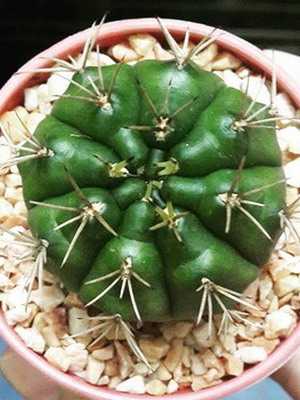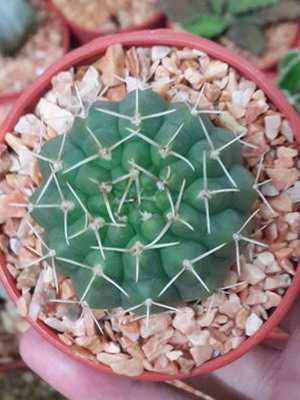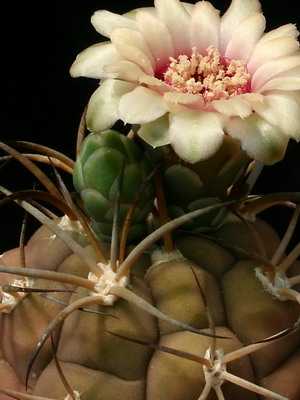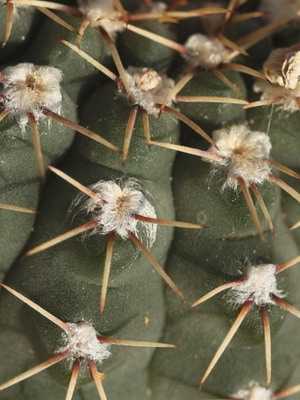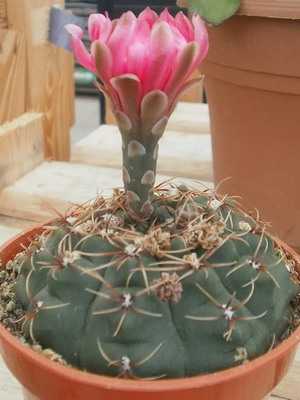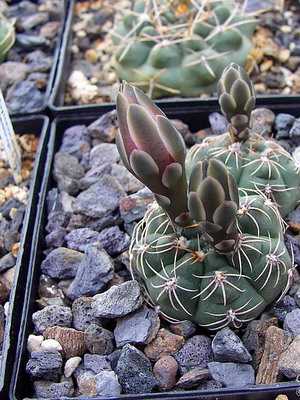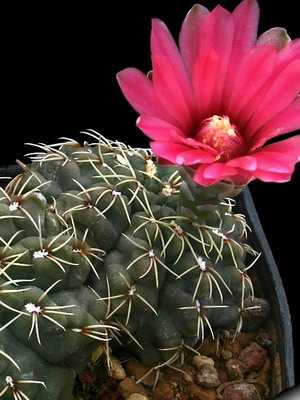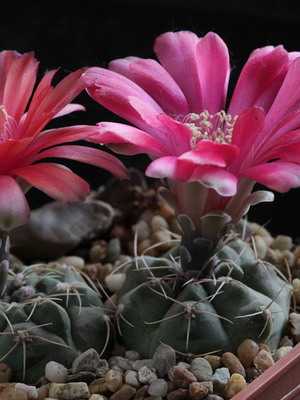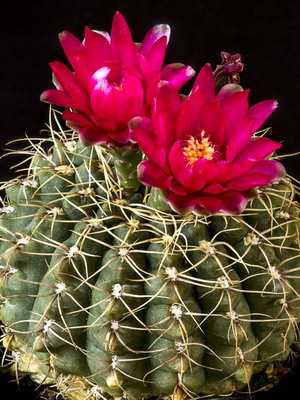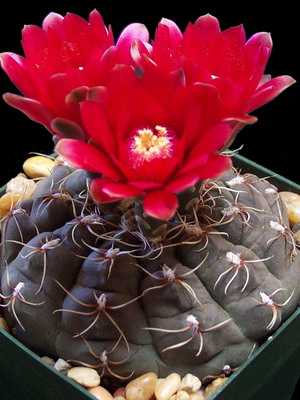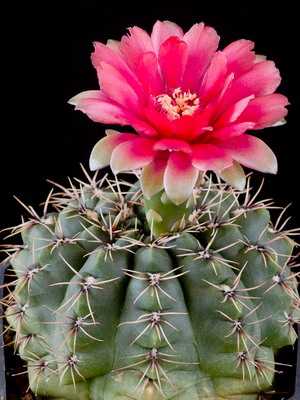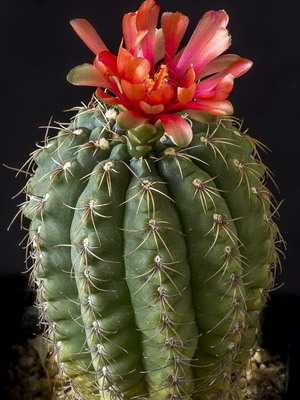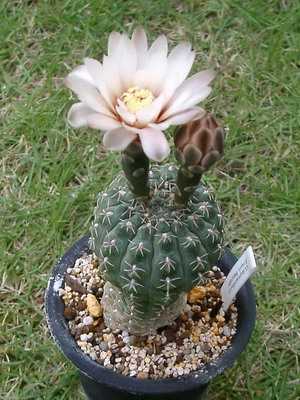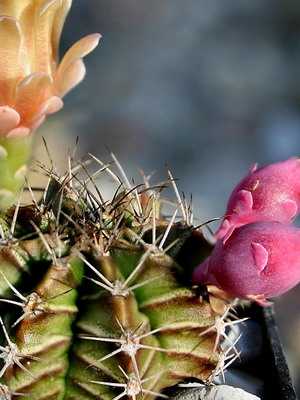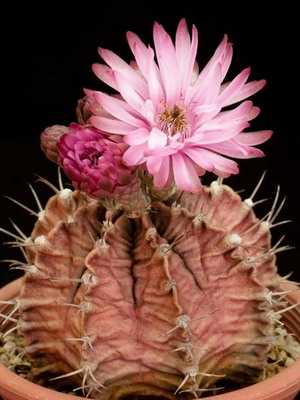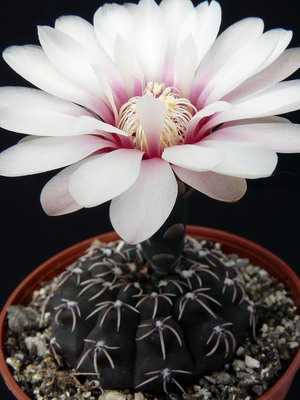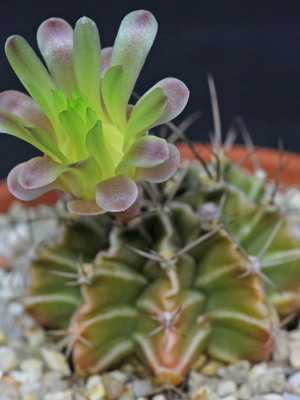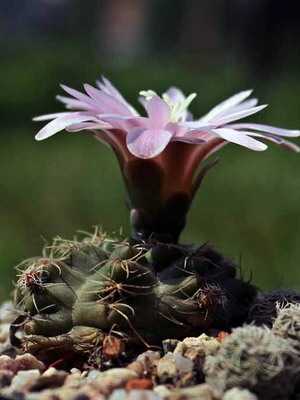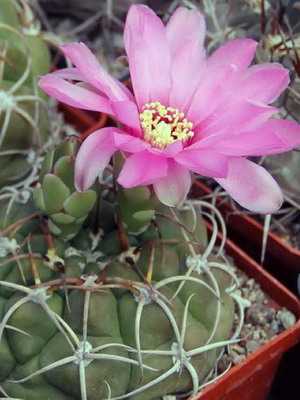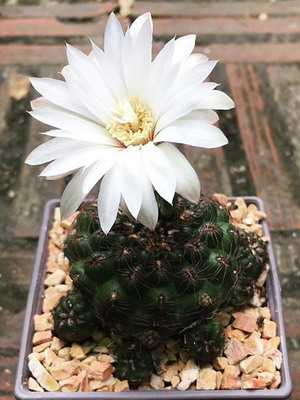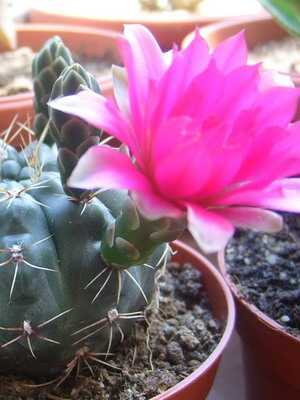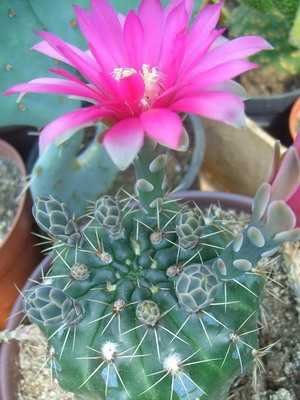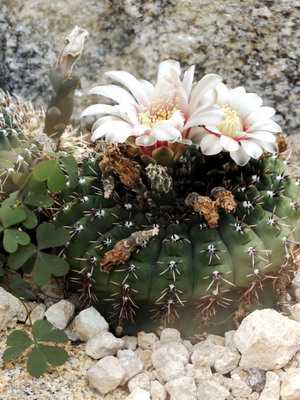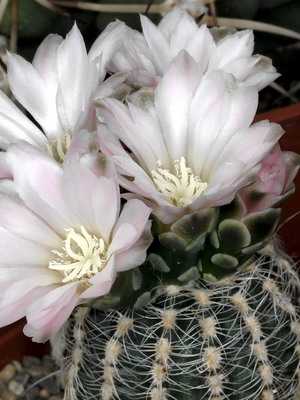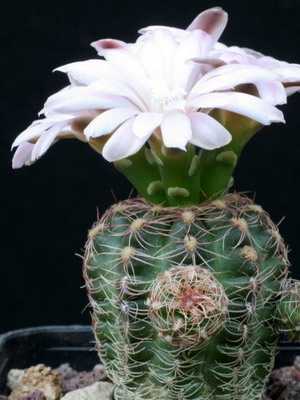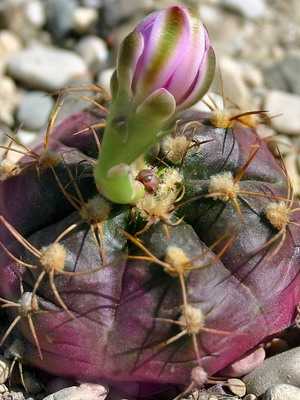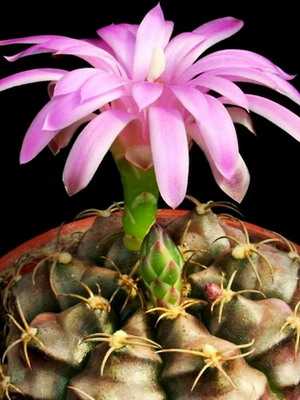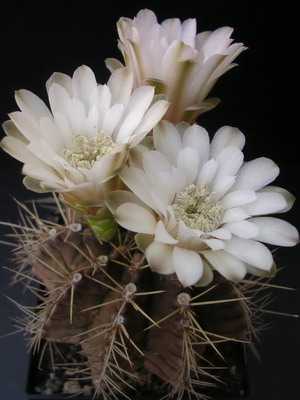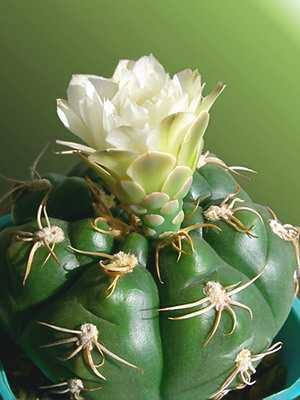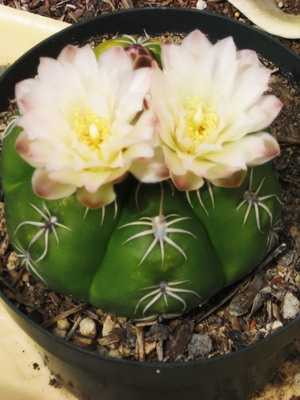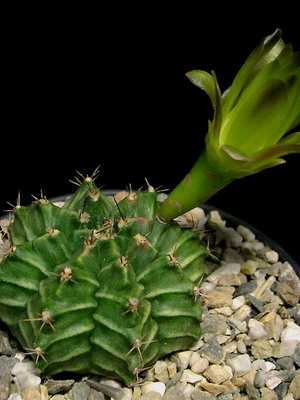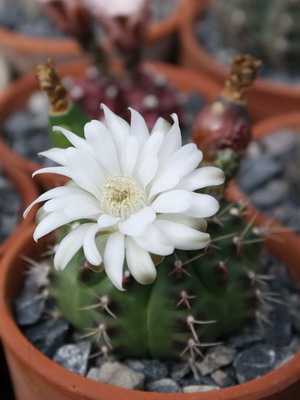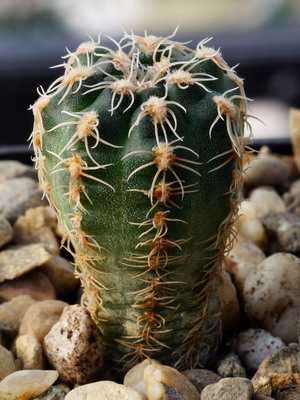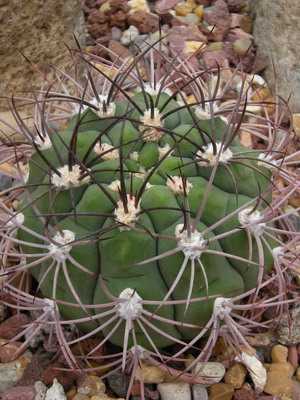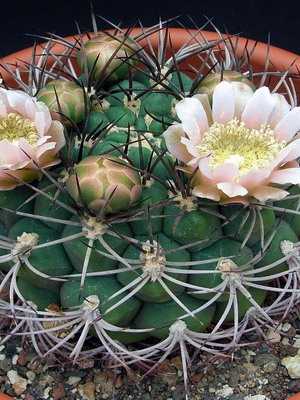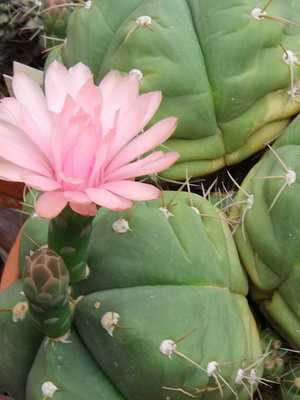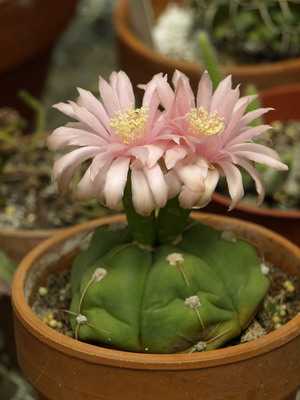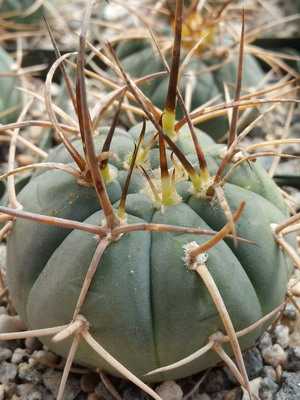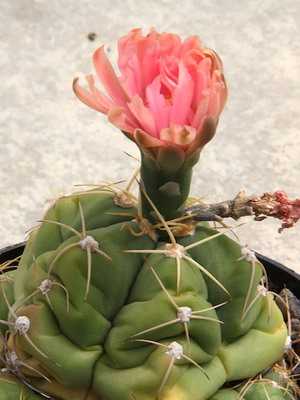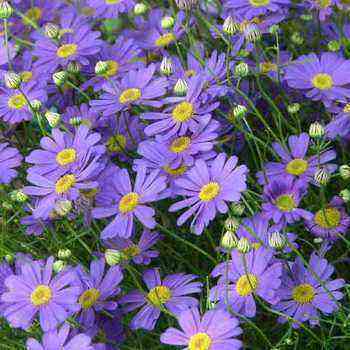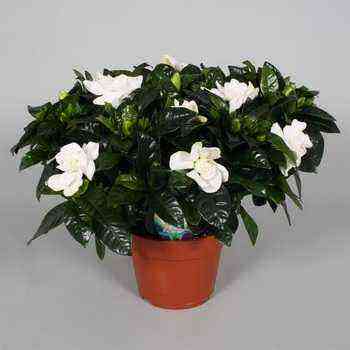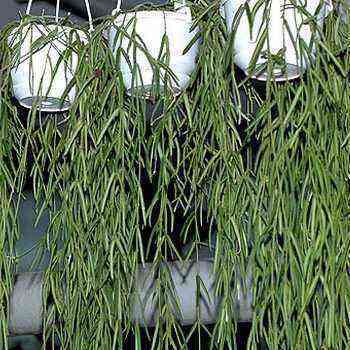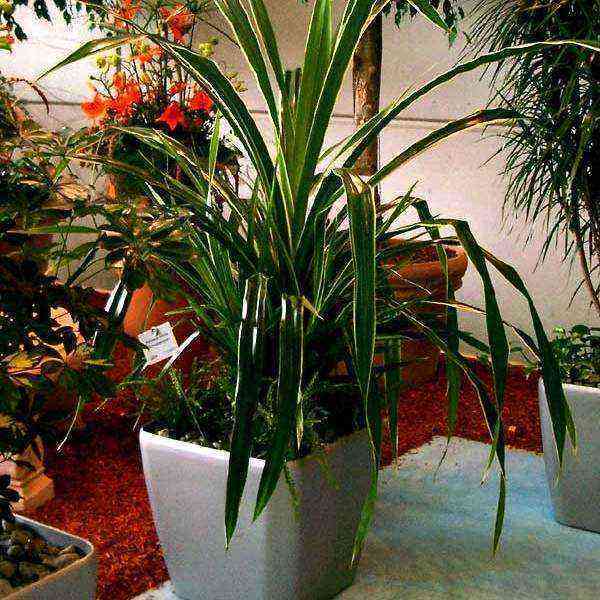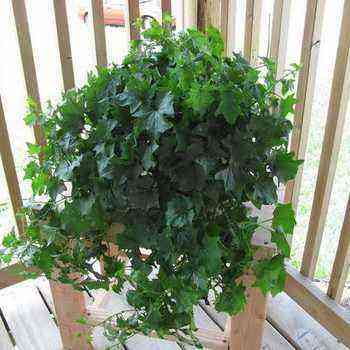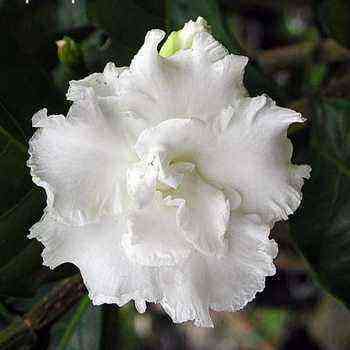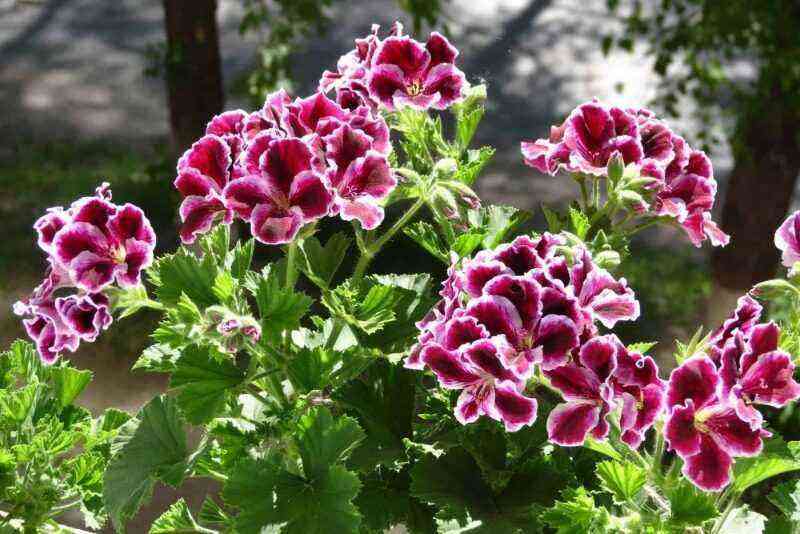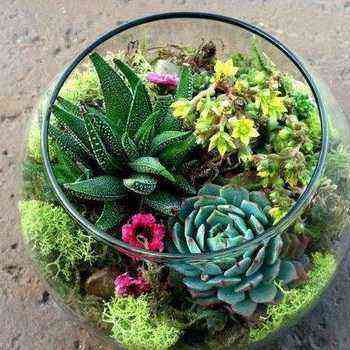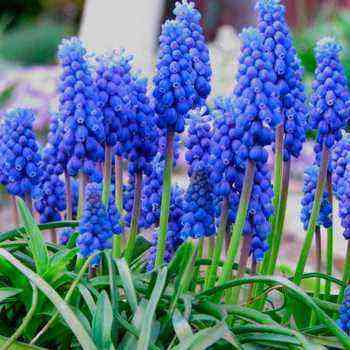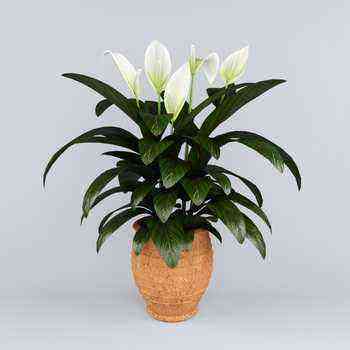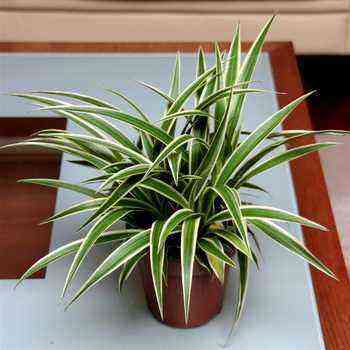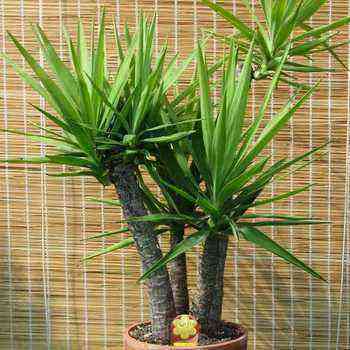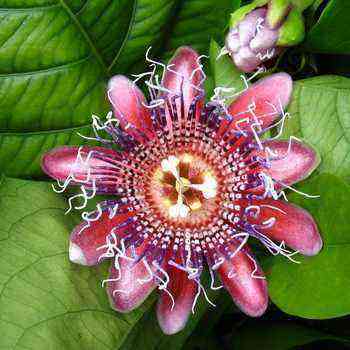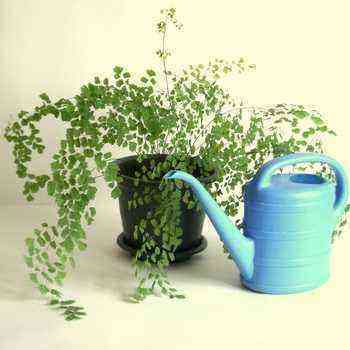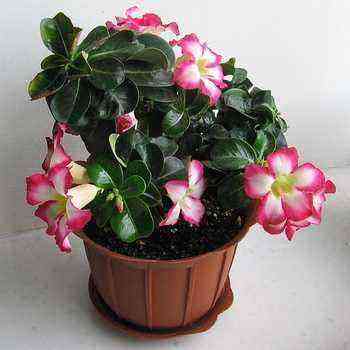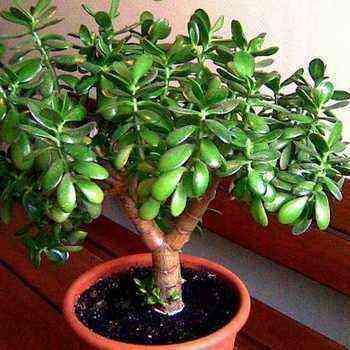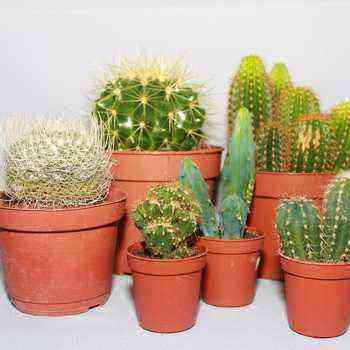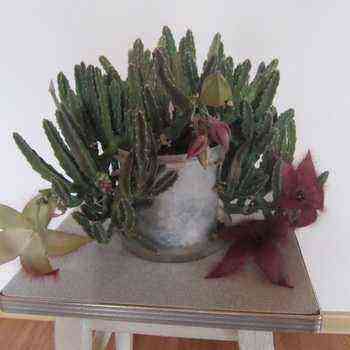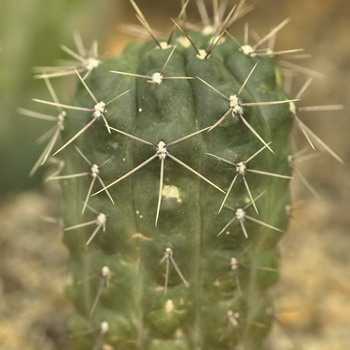
Moreover, any cactusist can choose a home Gymnocalycium flower to his taste – they come in a variety of colors and sizes.
Home flowers Gymnocalycium
Gymnocalycium (Gymnocolycium) Is one of the signature collectibles. Undemanding, flowering easily and luxuriantly, beautiful and varied, these cacti are extremely popular in cactus growing. There are about 100 species of them and many hundreds of forms and variations (both natural and cultivated).
As you can see in the photo, Gymnocalycium is mostly spherical or flat-globular, with various, often powerful and intricately curved spines:
Even the most beautiful Gymnocalycium, at least most of them, do not require a lot of sun, tolerate excess moisture, and are undemanding to the substrate.
In general, on the one hand, due to their undemanding nature, they are excellent plants for beginners and for simple maintenance on the windowsill, and on the other hand, due to their high variety and richness of forms, they are a wonderful object of serious collecting.
With a lack of light, Gymnocalycium does not stretch, which makes it convenient for their widespread use in phytodesign. Among the species of the genus, there are miniatures with a stem just over one centimeter, and giants the size of a bucket. This variety allows you to find a look that suits any space.
Their most characteristic feature is a thick flower tube covered with smooth, fleshy scales.
Look at the photo – the flowers of the Gymnocalycium are daytime, large, solid, opening wide at the top of the stem:
The color of the flowers is rich, usually white, but there are also various shades of pink or yellow. The main thing is that flowering can also occur in ordinary room conditions.
Cacti Gymnocalycium-mix (with photo)
All types of Gymnocalycium are one of the favorite objects of experimental cacti growers. And if the breeding of hybrid, unusually flowering forms (for example, the long-known red-flowered hybrid of the Gymnocalycium denudatum ‘Yan Shuba’) has a controversial value, then the appearance of “colored” forms of Gymnokalycium-mix is an event not only for cactus growing, but also for the entire decorative floriculture …
Chlorophyll-free colored forms are known for many groups of cacti, but Gymnocalycium-mix colored cacti (the so-called red caps or neon cacti) were the first to be introduced into the culture.
The first to spread were red Gymnocalycium mikhanovichi (G. mihanovichii) and stenopleurum (C. stenopleurum), and then pink of various shades, purple appeared.
Pay attention to the photo – Mix Gymnocalycium can have black and yellow forms:
The variety of colored forms has become so great that specialized collecting is developing. However, the main use of these plants is decorative.
Since chlorophyll-free cacti feed on the stock, they themselves need almost nothing – no sun, no special care, no special temperature: the stock would be alive. As a rootstock, you can choose the most resistant cacti. Chlorophyll-free Gymnocalycium give many babies, which are very easy – easier than many other cacti – to be grafted.
Chlorophyll-free Gymnocalycium can even bloom – not as abundantly as their normal relatives, and only in a well-lit place. The decorative value of colored Gymnocalycium can hardly be overestimated. They can stand anywhere and be a bright spot in any plant composition. However, it should be borne in mind that colored forms are short-lived, and their collection value is low. The novice collector does not need them.
A novice collector should keep in mind that, on the one hand, when choosing Gymnocalycium, it is better to prefer the “old”, well-known and cultured undemanding species.
For example:
G. baldianum (baldianum) – with rare red flowers in representatives of the genus.
G. quehlianum (quelianum) with a brownish flat-shaped stem.
G. bruchii (bruhi) – graceful, bushy, completely covered with pinkish short spines and very early, at the very beginning of spring, blooming with small pink flowers.
G. damsii (damsey) – revealing many large white flowers at the same time.
G. mihanovichii (mikhanovichi) – beautiful and diverse, different forms of which have flowers from white to green or yellow.
G. denudatum (denudatum) – with a characteristic fleshy spherical stem and spider-like spines.
But, on the other hand, all these species, as a result of long and often illiterate cultivation, are genetically contaminated and usually have no collection value.
As you can see in the photo, the Gymnocalycium of these species are relatively small, blooming at an early age:
But there are also popular large-stemmed Gymnocalycium, the flowering of which has to wait for many years, but they are good without flowers.
First of all – G. saalionis (saglionis) with large spherical tubercles and powerful curved thorns, a spectacular plant at any age.
Among the less common and most interesting types are:
G. ragonesii (ragonesi).
G. horstii (horsy).
G. cardenasianum (cardenasianum).
In the former, small flat stems barely rise above the ground, spider-like spines are spread over the gray-brown epithelium, and graceful creamy-white flowers seem to be raised high due to a very narrow and long flower tube. The second is unusual for its juicy roundness, its few wide and flat ribs cover slightly curved powerful yellowish spines, but most importantly – record large white flowers for the genus, up to 11 cm in length and diameter. The third is armed with long, powerful, bizarrely curved spines, which are unusually diverse in different specimens. The large pink flowers of this Gymnocalycium cannot even always break through the plexus of thorns and then do not open.
Here you can see a selection of photos of various types of Gymnocalycium cacti:
